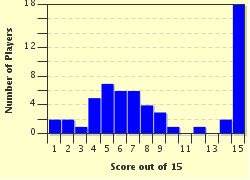Quiz Answer Key and Fun Facts
1. The Washington Naval Treaty was a pioneering international effort to limit competition in armaments. Which of the following nations was NOT a signatory - and wasn't even invited to the conference?
2. Who issued the initial invitations that led to the Washington Naval Treaty?
3. The United States had never commissioned this type of warship - but in 1921 the U.S. planned to build a half-dozen of them, larger than any existing ships of their kind. The Washington Treaty put an end to the American plans.
4. As of 1921, Britain's HMS Hood was the largest warship in the world, but the Royal Navy had already decided not to build any sister ships. Why not?
5. During negotiations, the United States proposed several major limits on naval construction. Which of the following U.S. proposals was NOT adopted in the Washington Treaty?
6. The Washington Treaty used two basic criteria to define "capital ship". What were these criteria?
7. The building of which of these types of naval vessels was NOT limited by the Washington Treaty?
8. The Washington Treaty defined "standard displacement" to measure the tonnage of warships. This included almost everything a warship needed for operations - but this basic item was intentionally omitted from the calculation.
9. One important Article of the Washington Naval Treaty did not deal with warships at all. What did this Article govern?
10. The Washington Treaty is known for its "ten year battleship holiday". Did the signatory powers actually complete any new battleships during the ten years from 1922 through 1932?
11. The Washington Treaty sparked an unexpected naval arms race in building new "Treaty Cruisers". What were their two primary characteristics?
12. The Washington Treaty was highly controversial in Japan. Expansionists resented limiting Japan to 60% of the capital ship tonnage of the U.S. Navy. (Future) Admiral Isoroku Yamamoto - who would mastermind the attack on Pearl Harbor in 1941 - supported the ratio. What was his reasoning?
13. One of the delegations to the Washington Conference received decoded intercepts of messages between the other delegations and their home governments. Which nation enjoyed this secret advantage?
14. The Washington Treaty required the U.S., Britain and Japan to scrap or demilitarize numerous existing capital ships by the end of 1922. Approximately how many capital ships (total) were destroyed by a piece of paper?
15. How long did the Washington Naval Treaty of 1922 take to negotiate, from the first session through the initialing of the Treaty?
Source: Author
ignotus999
This quiz was reviewed by FunTrivia editor
stedman before going online.
Any errors found in FunTrivia content are routinely corrected through our feedback system.


